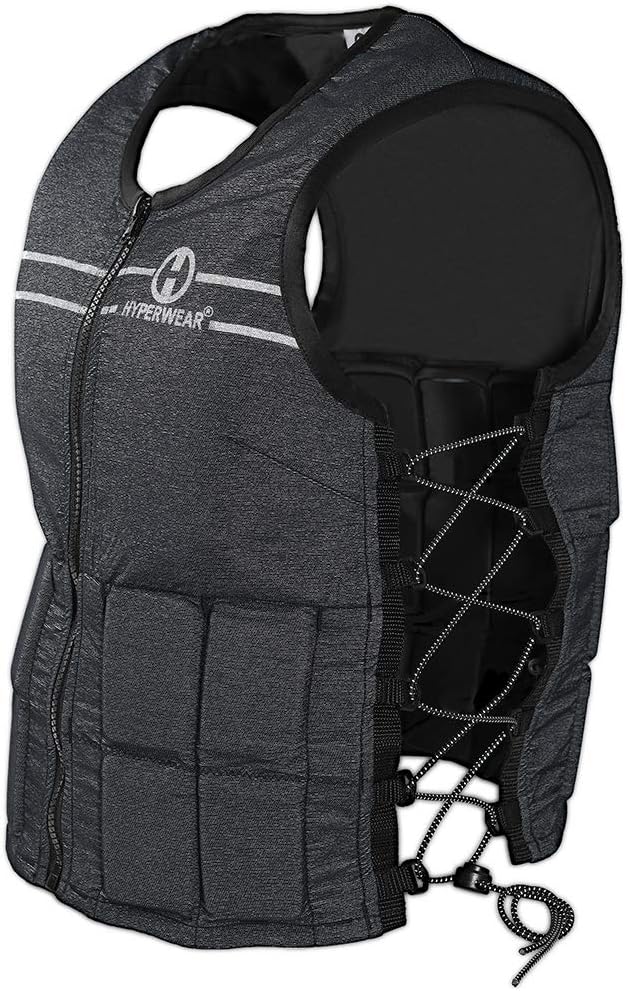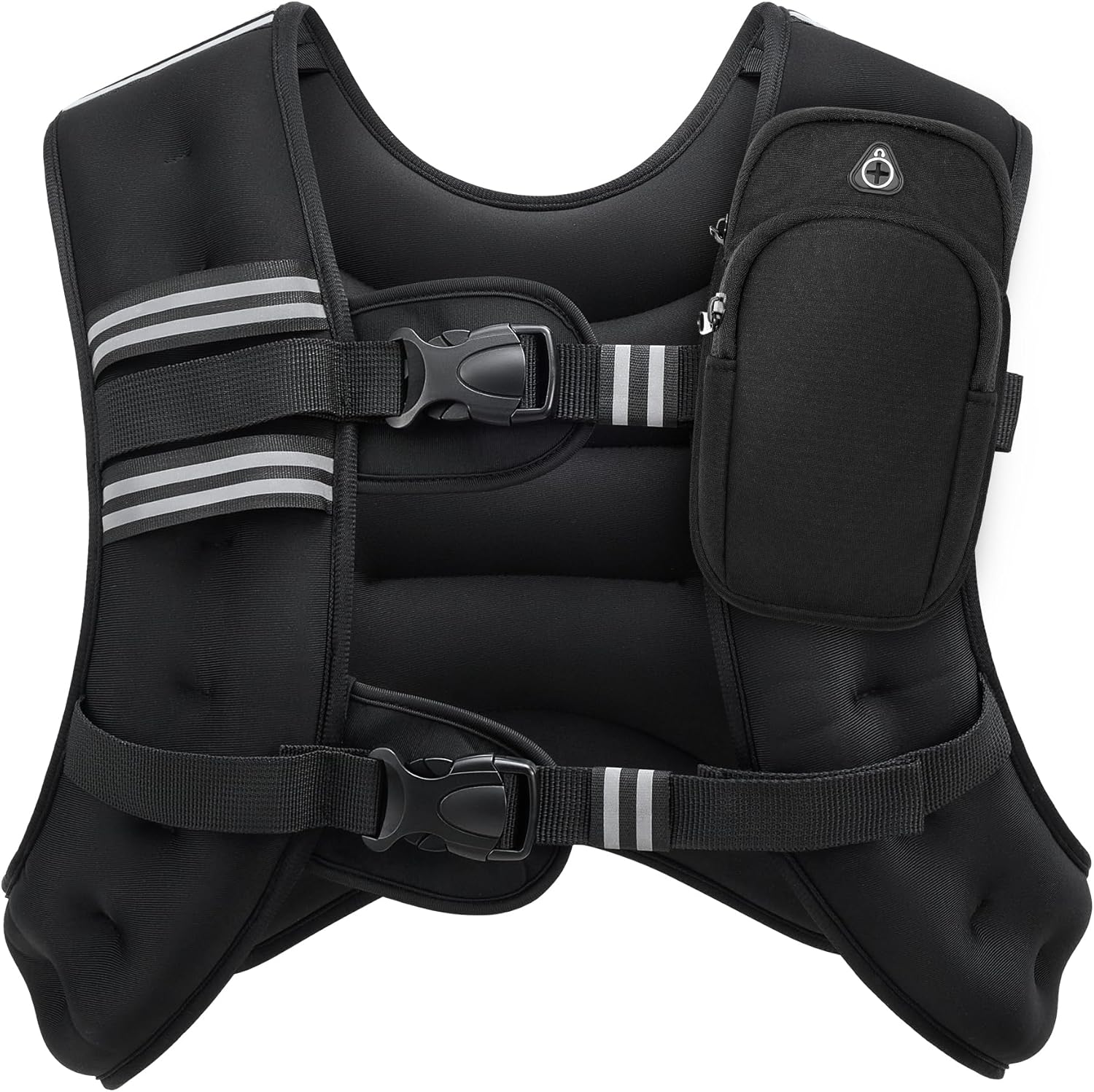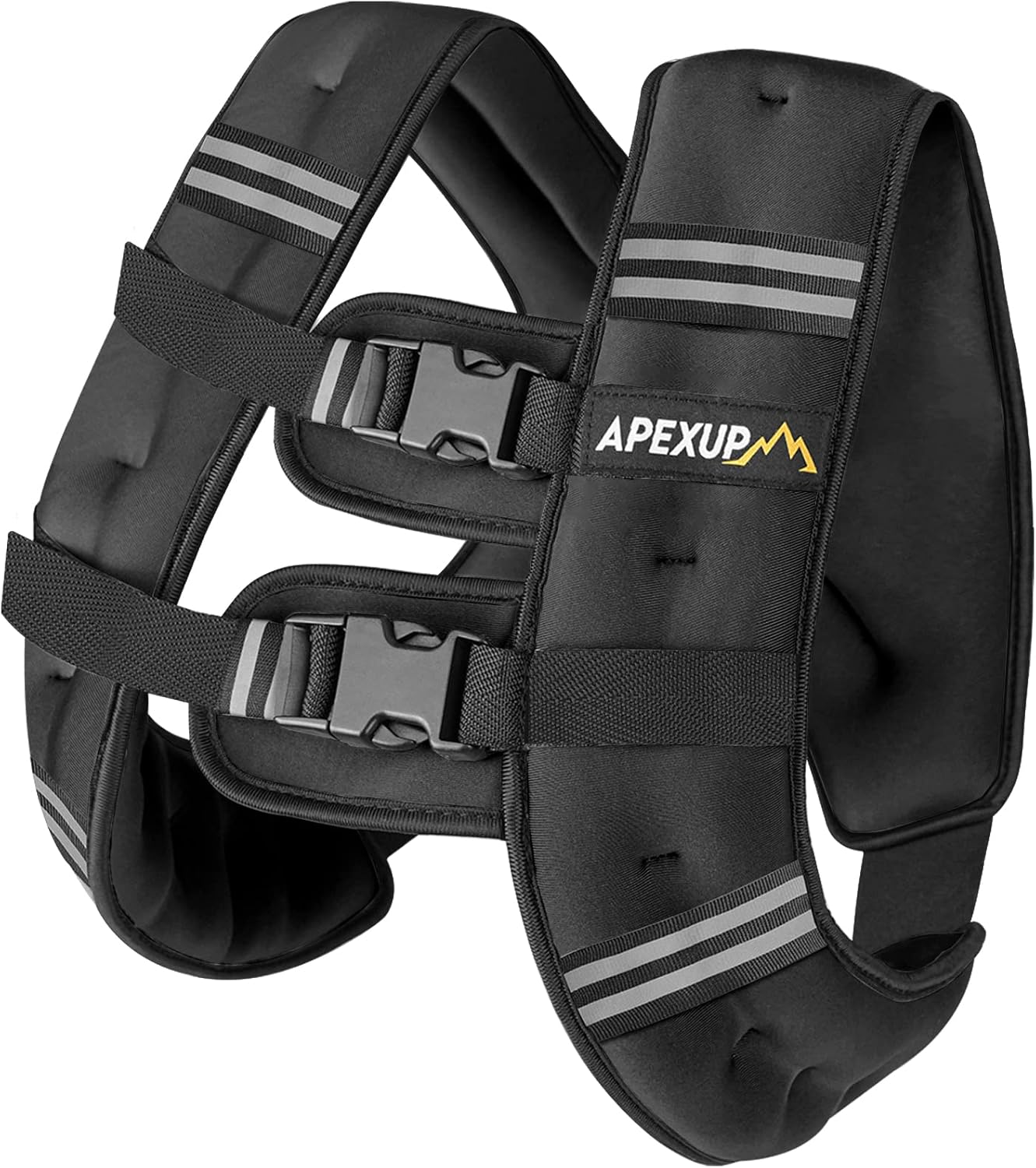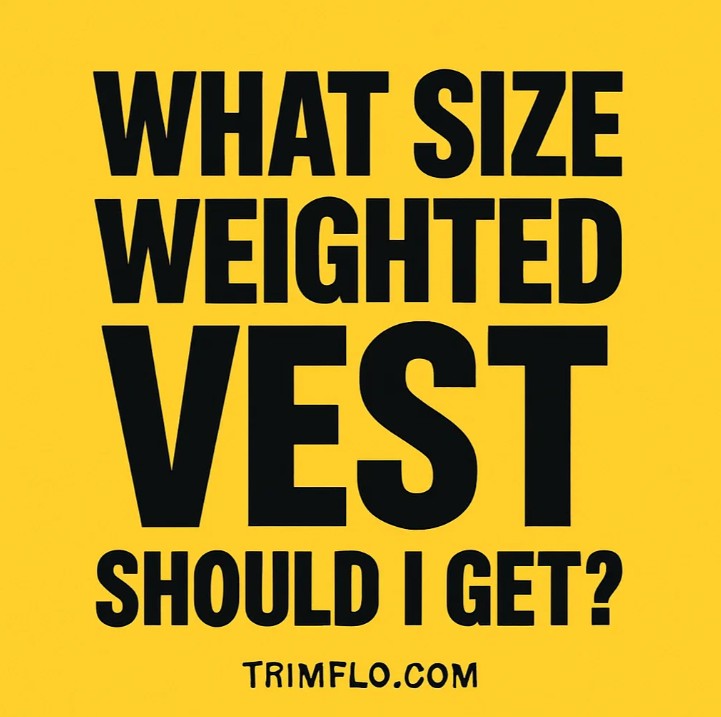I'm a participant in the Amazon Services LLC Associates Program, an affiliate advertising program designed to provide a means for me to earn fees by linking to Amazon.com and affiliated sites.
Here’s a clear breakdown to help you decide what size weighted vest you should get. Since vest sizing isn’t just about body size, but also about weight load, fit, and purpose, I’ll cover everything you need to know.
Recommended Weighted Vest for All Sizes
| Feature | Hyperwear Hyper Vest Fit | Zelus Weighted Vest | APEXUP Weighted Vest |
|---|---|---|---|
 |  |  | |
| Weight Range | 0.5–10 lbs (adjustable) | 6–30 lbs (fixed) | 5–30 lbs (fixed) |
| Adjustability | Individual half-pound weights | Fixed weight per model | Fixed weight per model |
| Material | Nylon, satin, elastic | Neoprene, iron sand | Neoprene, iron sand |
| Fit Style | Zip-up front, elastic sides | Buckle straps, open shoulder-holster | Adjustable strap, compact fit |
| Storage | Weight pockets | Rear mesh pocket + detachable phone holder | Mesh back pocket |
| Visibility | Low-profile | Reflective strips | Reflective strips |
| Best For | All-purpose workouts | Walking & light training | Running & cardio |
| Price |
1. Match Weight to Your Goal
- Walking & General Fitness
Start light: 5–12 lbs (≈5–10% of your body weight). Great for boosting calorie burn, posture, and endurance without straining joints. - Running or HIIT
Keep it light-to-moderate: 6–15 lbs. A snug, low-profile vest works best to prevent bouncing. - Strength Training & Conditioning
Go heavier: 20–40 lbs, or even adjustable vests that go up to 60 lbs. This lets you scale resistance as you get stronger. - Advanced Training / Tactical Use
Some vests range up to 100+ lbs, but these are typically for military, CrossFit, or highly trained athletes.
2. Consider Your Body Size & Fit
- One-size vests usually fit most adults, but look for adjustable straps or buckles to avoid bouncing.
- Slim or petite women often do best with lower weight ranges (4–12 lbs) and ergonomic cuts designed for smaller frames.
- Broader builds may prefer adjustable vests with Velcro or buckle closures for a secure fit.
3. Fixed vs Adjustable Weight
- Fixed-weight vests are simple and cheaper—good if you know the exact load you want.
- Adjustable-weight vests let you add or remove weight, which is ideal if you want one vest to cover walking, running, and strength training.
4. Quick Sizing Rule of Thumb
- Beginners: 5–10% of body weight
- Intermediate/Regular Exercisers: 10–15% of body weight
- Advanced Athletes: 15–20% of body weight
👉 Example: If you weigh 150 lbs, a good starting vest would be 7–15 lbs for walking or running.
| Feature | Hyperwear Hyper Vest Fit | Zelus Weighted Vest | APEXUP Weighted Vest |
|---|---|---|---|
 |  |  | |
| Weight Range | 0.5–10 lbs (adjustable) | 6–30 lbs (fixed) | 5–30 lbs (fixed) |
| Adjustability | Individual half-pound weights | Fixed weight per model | Fixed weight per model |
| Material | Nylon, satin, elastic | Neoprene, iron sand | Neoprene, iron sand |
| Fit Style | Zip-up front, elastic sides | Buckle straps, open shoulder-holster | Adjustable strap, compact fit |
| Storage | Weight pockets | Rear mesh pocket + detachable phone holder | Mesh back pocket |
| Visibility | Low-profile | Reflective strips | Reflective strips |
| Best For | All-purpose workouts | Walking & light training | Running & cardio |
| Price |
FAQs About Sizing a Weighted Vest
Q: Should I size up if I want more challenge later?
Go for an adjustable vest instead of sizing up—too heavy too soon increases injury risk.
Q: Is a 20 lb vest too much for beginners?
For most, yes. Start lighter (6–12 lbs) and progress gradually.
Q: Does height or gender matter?
Not much—fit and comfort matter more. But women often prefer slim-cut, ergonomic designs for better shoulder and chest fit.
Other Interesting Articles
- Women’s Weighted Vest for Walking: Top Picks Tested by Fitness Experts
- Ladies Weighted Vest: Top Picks Tested by Fitness Pros
- Zelus vs Pacearth Weighted Vest — Which One Wins Your Next Workout?
- Zelus vs Apexup Weighted Vest — Which One Powers Your Next-Level Training?
- Zelus vs Prodigen Weighted Vest: Best Weighted Vest for Fat Loss
Author
Written by Trimflo — Gear expert guiding fitness enthusiasts to the right equipment for their body, goals, and training style.
The best weighted vest size is the one that matches your fitness level and activity—start lighter, build gradually, and let progress guide your upgrades.
